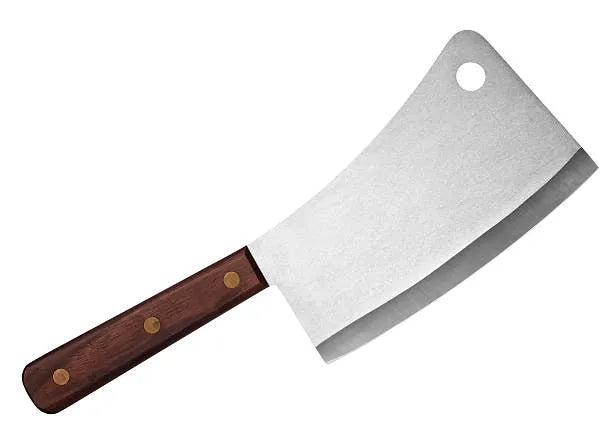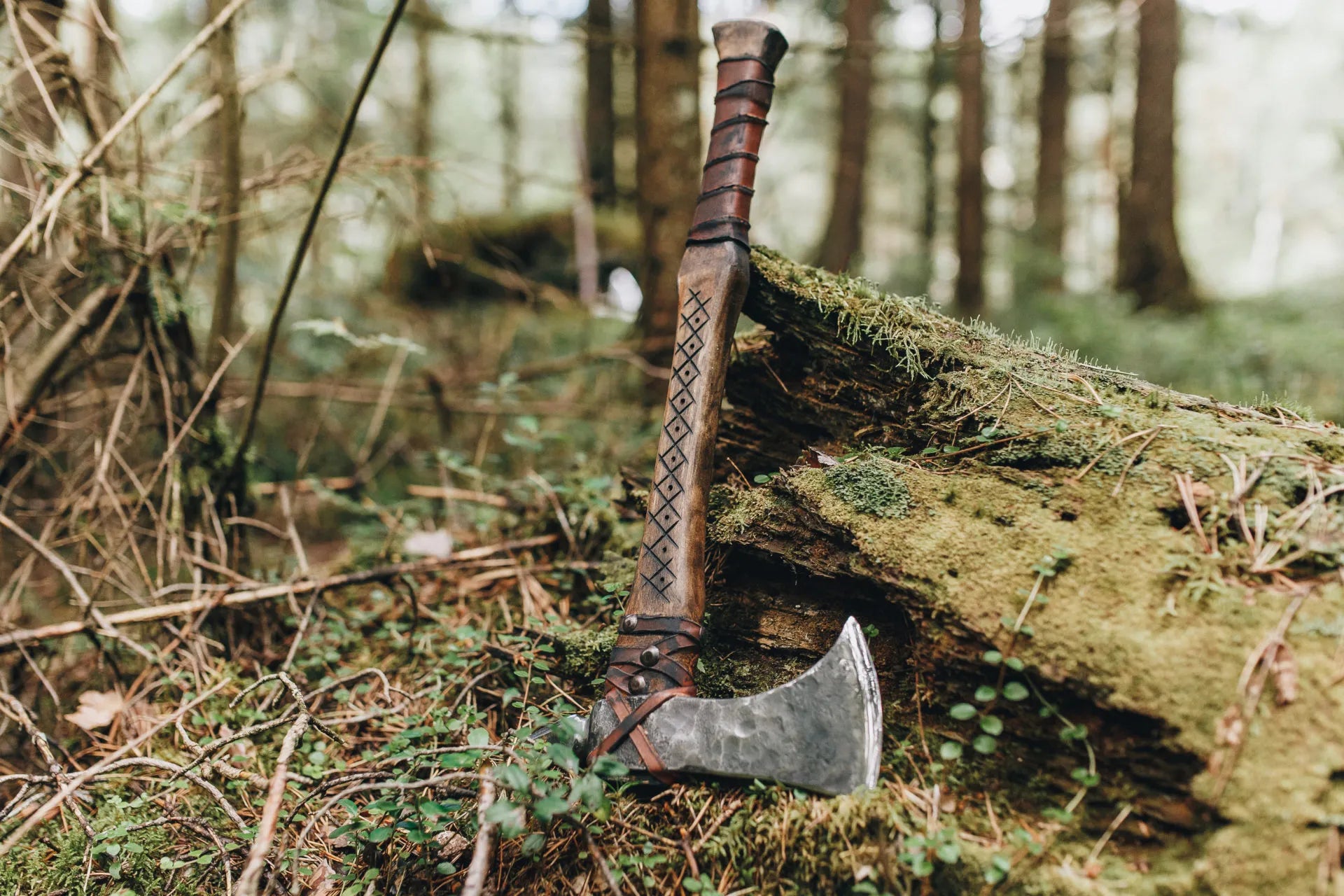
What is a Viking Axe Called?
Historians, weapon enthusiasts, and cultural devotees have all been fascinated by the Viking axe. It is a classic representation of Norse ancestry. However, this axe has been given different names based on various eras. So, what is a Viking axe called?
Viking weapons of battle and craftsmanship are frequently linked to the terrifying image of the Viking warrior. They have profound cultural and historical importance. Knives Hives explains its background, and its significance to Norse culture.
The Historical Name of the Viking Axe
Historically, the Viking axe has been called the ‘Dane axe’ or the ‘bearded axe’ (in Old Norse, Skeggöx). A ‘bearded axe’ gets its name from the unique way the bottom portion of the axe head hangs down like a beard.
This design was helpful in everyday work and provided versatility in wars and combat. The Danish Vikings are credited with popularizing the ‘Dane axe’ throughout Europe.
The axe is frequently hailed as the preferred weapon of gods and warriors in Norse mythology and sagas. Because of this heritage, it is highly regarded by both contemporary and historical Viking fans.
Features of a Viking Axe
It is essential to examine the characteristics that define a Viking axe. It will ultimately make sense about ‘What is a Viking axe called?’:
Design and Structure
Viking axes had metal heads, usually made of steel or iron. Their long hardwood handles were usually made of elm or ash. Some axe heads were used for fighting, while others were used for cutting.
The lightweight construction allowed the soldier to move quickly during combat, while the curved edge allowed for more effective hits.
Adaptability
The Viking axe served as a valuable tool for everyday tasks in addition to being a weapon. The Norse employed it for:
-
Shipbuilding
-
Woodworking
-
Other survival-related activities
These multiple functions demonstrate how inventive Viking artistry was.
Cultural Significance
The Viking axe was a status and power symbol in addition to its practical use. Chieftains and other affluent people frequently had elaborately carved axes and valuable metals.
Buy: Damascus steel axe.
Types of Viking Axes
Viking axes came in a variety of forms, each with a distinct function:
Broad Axe (Breiðöx)
With its broad blade, the broad axe was primarily employed in battle. It could easily pass through shields and dealt terrible hits.
Bearded Axe (Skeggöx)
As previously stated, the bearded axe was made to be versatile. Its extended bottom edge allowed it to catch and grip opponents or objects.
Throwing Axe (Fransisca)
A throwing axe was a lighter, smaller version used for distance assaults. It was a standard weapon in the Vikings' armory, albeit not unique to them.
Woodworking Axes
Despite not being made for fighting, these axes were essential for building ships and other structures, underscoring their significance in Viking exploration and commerce.
The Role of Viking Axes in Warfare
Due to its effectiveness and versatility, the Viking axe was a popular weapon on the battlefield. Fierce Viking warriors frequently used axes and shields in tandem for optimal offensive and defensive power. The Dane axe was a powerful weapon against shield walls and mounted foes because its long handle gave it reach and leverage.
In Viking sagas, renowned warriors such as Egil Skallagrimsson use axes as a sign of their skill and courage. These stories further solidified the axe's legendary reputation in Viking mythology.
Buy carbon steel axe.
What Makes the Viking Axe Still Useful Today?
Even today's audiences are still captivated by the Viking axe. Its design influences pop culture depictions of Viking warriors, historical reenactments, and modern tools. In addition, the renewed interest in Norse history has resulted in a greater understanding of the axe's workmanship and cultural significance.
Authentic Viking axes or reproductions are frequently sought after by collectors and historians for research, exhibition, or combat practice. Viking axes are shown in museums across the world, such as the National Museum of Denmark, to inform tourists about their historical significance.
The Bottom Line
So, what is a Viking axe called? The Viking axe's history and design are reflected in its most popular names. It symbolizes the Norse people's inventiveness, tenacity, and cultural richness.
Our Viking axe is a timeless symbol of the Norse heritage, regardless of whether it is valued for its artistry or its influence on Viking history.








